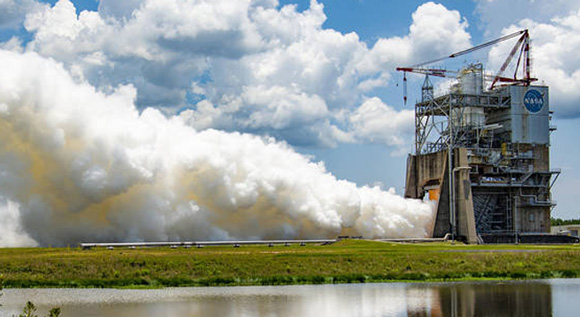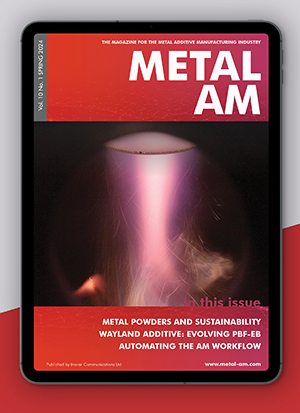NASA and Aerojet Rocketdyne complete initial RS-25 engine certification series for Artemis missions
June 30, 2023

NASA and Aerojet Rocketdyne, headquartered in El Segundo, California, have completed a certification test series for the new RS-25 engines that are set to propel NASA’s Space Launch System (SLS) exploration rocket for Artemis missions, beginning with Artemis V. The RS-25 engines have been redesigned for improved performance and lower costs, featuring simplified component designs that take advantage of metal Additive Manufacturing.
“This certification test series for the redesigned engine sets the stage for a new chapter of spaceflight history for the RS-25 engines and future flights of the SLS rocket,” stated Johnny Heflin, SLS liquid engines manager at NASA. “The newly redesigned RS-25 engines leverage advanced manufacturing techniques and innovative designs while increasing the engine’s performance as NASA aims establish a sustainable presence on the Moon and prepare for future missions to Mars.”
The SLS core stage is powered by four Aerojet Rocketdyne RS-25 engines, each one capable of generating more than 500,000 pounds of thrust. Like Artemis I, the next three SLS flights are using heritage Space Shuttle Main Engines that have been upgraded with modern flight controllers, whilst subsequent missions will have the newly built RS-25 engines.
“With the completion of this twelve-test campaign, we have cleared a major milestone in our RS-25 production restart programme,” said Eileen P Drake, Aerojet Rocketdyne CEO and president. “The test series went very smoothly, raising our level of confidence that the new hardware designs and manufacturing processes will yield highly producible, reliable engines.”
The test series ran from February 8 to June 22 on the Fred Haise Test Stand at NASA’s Stennis Space Center and involved firings ranging from 500 seconds — matching the nominal SLS flight profile — to 720 seconds. The engine was tested across the full range of power level settings required for flight — from 80% to 111% rated power — and even sometimes at 113% rated power, to demonstrate operational safety margin.
The certification campaign also tested the engine’s redesigned nozzle, demonstrated engine gimballing at angles ranging from 1 to 6 degrees off centre, and showcased the new optimised flexible fuel and oxidiser feed lines that result in more cost-effective hardware components. The longer-duration tests and gimbal demonstrations are relevant to certain flight scenarios and help expand the RS-25 performance database.
NASA and Aerojet Rocketdyne will reportedly begin a similar twelve-test series on a different engine later this summer, completing the certification process. The newly manufactured engines are scheduled to begin delivery to NASA in 2024 and will make their debut on the Artemis V mission.
Download Metal AM magazine

















